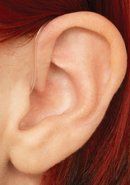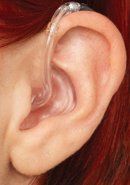Hearing Aid Styles
You and Your Hearing Aid
Attitude is an important key factor to success with your new hearing aids. Hearing aid studies have shown that people who have a positive attitude do better with hearing aids. If you, as well as your spouse or family, approach your hearing aid fitting with a positive outlook you will have a much better listening experience more quickly. Keep in mind that it may take some time to get used to the sounds you were missing, and by working closely with your Registered Hearing Aid Practitioner (RHAP), you will get the most out of your new hearing aids.
A wide range of technology and a host of features are available in each hearing aid style. The cost of hearing aids generally depends on the technology and the number of features the instrument has and not on the style selected. Today’s digital hearing aids are typically offered in various levels, such as entry, advanced or premium level. Within each level, different technology and features are available.
Basic digital hearing aids generally require the wearer to make some manual adjustments in certain listening environments, such as turning a volume control up or down, or pushing a button to change listening programs. In contrast, a premium or more advanced hearing aid responds automatically to changes in the listener’s environment, making changes based on the signals being detected by the hearing aid. As the level of the technology increases in hearing aids, so does the availability of advanced features.
A wide range of technology and a host of features are available in each hearing aid style. The cost of hearing aids generally depends on the technology and the number of features the instrument has and not on the style selected. Today’s digital hearing aids are typically offered in various levels, such as entry, advanced or premium level. Within each level, different technology and features are available.
Basic digital hearing aids generally require the wearer to make some manual adjustments in certain listening environments, such as turning a volume control up or down, or pushing a button to change listening programs. In contrast, a premium or more advanced hearing aid responds automatically to changes in the listener’s environment, making changes based on the signals being detected by the hearing aid. As the level of the technology increases in hearing aids, so does the availability of advanced features.
Styles of Hearing Aids
Hearing aids are available in many different sizes and styles thanks to advancements in digital technology and miniaturization of the internal components. Many of today’s hearing aids are considered sleek, compact and innovative – offering solutions to a wide range of hearing aid wearers.
Behind-the-Ear (BTE) Styles:
BTE hearing aids sit behind the ear with an attachment to an earpiece that fits inside the ear canal. They have a wide range of amplification, from mild to profound.
Receiver-in-the-Ear (RITE)
RITE models are one of the most commonly fit hearing aids on the market today. They fit mild to moderately-severe hearing losses. They sit discreetly behind or on top of the outer ear, with a receiver that directly sends sound into the ear. The receiver connects to an ear tip to secure them in the ear canal.
In-the-Ear (ITE) Styles:
Hearing aids worn in the ear are usually custom-fit, based on a cast or impression of the ear. They're available in different skin tones to camouflage with the outer ear. There are several styles – each is listed below, ranging from smallest to largest.
Completely in the Canal (CIC)
The smallest custom style, CIC instruments, fit deeply and entirely within the ear canal. They fit moderate to moderately-severe hearing losses.
In the Canal (ITC)
ITC instruments sit in the lower portion of the outer ear bowl, making them comfortable and easy to use. Because they’re slightly larger than CIC models, they usually have a longer battery life and can have volume control. They fit moderate to moderately-severe hearing losses.

